 Puffy stickers on a Trapper Keeper, a smile glistening with strawberry Kissing Potion, and a pencil box filled with scratch-and-sniff markers, and you were off to a great start for the school year. But how do you restart your writing after a summer of listening to the Pretty in Pink soundtrack on your Walkman? This Back-to-School Retro Summer post has the perfect checklist. ~ by Amanda Smith September. The luggage is unpacked. The house is put back together. The kids are settled in their back-to-school routines. Which lends me to ask, in the words of our good friend Joey, As much as we itch to get back to writing, finding our groove after the summer can be challenging. Here are a few strategies that help me focus my writing for the last quarter of the year.
Do you belong to a critique group or book discussion group? Often these groups take a hiatus over Summer. Don’t forget to press reset and get back to your normal routines. When I was a kid I used to hate the “back to school” commercials that appeared on TV mid-vacation. We used to say “back to jail” or “back into the cage.” Now I view this time of year differently. I love the excitement of new teachers and learning. I appreciate routines clicking into place, like the gears of a well-oiled machine. And I enjoy the quiet house and increased productivity that it brings. This fall, may you find your desk, reset your schedule, go back to school, and set aggressive goals to finish the year strong!
0 Comments
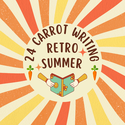 This week's throwback blog was first posted in 2018. This rad post recognizes that you may be looking to catch a wave this summer, but offers tips to make sure your don't wipeout on those writing goals! Enjoy as our RETRO SUMMER continues!  By Annie Cronin Romano Summer is here. It’s a time for sun, sand, and sangria! A time for hanging out with friends and family, relaxing vacations, and outdoor fun. So, my fine writer friends, where does your writing fit into the summertime equation? Because, as most of us know, summer is also notoriously known as a time for slacking. Don’t be a slacker, my writer friends! This is where those writing goals come in handy. Hopefully you included that “forgiveness clause” into your writing goals (see Set Your Writing Goals With a Little Forgiveness, 1/23/18). But if you didn’t, or if you haven’t set your summer writing goals yet, here are some tips for keeping the ink flowing while enjoying this active time of year. Tip #1. Going on vacation? Take a journal with you and write in it daily. It doesn’t have to be long. Just a few reflections on your day, or perhaps a description of a scene that you don’t want to forget. Maybe you came up with some story ideas. Jot them down. Keep your writer’s mind active even when you’re not working on an actual story. Tip #2. Read! What better way to become a better writer than to read consistently. Writers hear it all the time and, naturally, love books, so there’s a good chance you read regularly anyway. But in case time is more elusive for you the rest of the year, take some time this summer to crack the spine on a few books you’ve been wanting to dive into. You may notice some new writing approaches or styles along the way. Tip #3. Use your phone’s note-taking app. Even if you don’t have time to do much extended writing, sparks of inspiration may strike, and you probably won't have your laptop or notebook available if you’re at the amusement park or on a hike. So pull out your phone and type yourself a brief note. Store that idea or inspiration away for another time. Tip #4. Take pictures, especially of unusual things. Vacations are full of picture taking opportunities, but step away from the selfies and snapshots of family, and take some random “slice of life” shots. Then use those images later as writing prompts. I know. Brilliant, right? You never know what the lens will capture. Your next story gem could lurk in those precious photos! Tip #5. Enjoy! After all…it’s summer! Happy writing! ~Annie 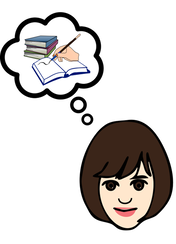 By Kelly Carey (reposted from December 2018) Often, when a family member, friend, or acquaintance learns that you are a children’s writer they comment back, “I’ve always wanted to be a children’s writer,” or “I’ve written a children’s book too”. As a seasoned member of the KidLit community you will want to be helpful and encouraging while still providing realistic and practical advice and information. The following blog is a post that you can share with folks you meet who want to become children’s book writers. Share it as a way to kick-start their writing journey and provide them with the first step information every writer needs to move from thinking about being a children’s writer to becoming a children’s writer. Becoming a Children’s Author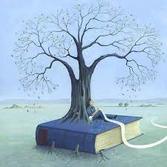 The dream of becoming a children’s author is a wonderful bubble that floats into the heads and hearts of many creative people. The trick is to take that dream and make it a reality. But how? There are three key first steps that every dreamer needs to take in order to kick start their writing journey and move it from a thinking about phase to a doing phase.  Step One: Write The first step to becoming a children’s author is to write. This may seem like common sense, but this is the point where many writing dreams sit stagnant. Aspiring writers may think about a story, and have a desire to be a writer, but often they will not take the time to sit down and put pen to paper or fingers to keyboard. To become a published writer you have to sit down and write. It can’t be on a whim or as a hobby. It has to be a real endeavor. Until you decide to make writing a priority, everything and anything - kids, family, chores, appointments, friends - can and will derail your efforts and interrupt your progress. Think of writing as a job that requires your undivided time and attention. To put true intention into your writing ambition, layer measurable goals into your dream:
For help setting your writing goals check out the posts under the Writing Goals section of the 24 Carrot blog archives.  Step 2: Find Your Tribe Writing can be a very solitary business. You’re not working for a company. There is no boss or co-worker. It is you alone with a laptop or a notebook. BUT you cannot work in a vacuum. You will need a group of fellow writers on your journey for the following reasons:
There are some practical ways to find your writing tribe. For example:
Engage in the community of writers in order to find valuable critique partners and a support system. For more help finding a writing tribe, check out the posts under the Writing Community section of the 24 Carrot blog archives. 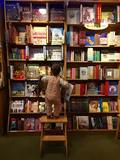 Step 3: Read There is a difference between reading a book as a reader for enjoyment and entertainment and reading a book as writer. Readers will enjoy a book, while writers will study why a book was enjoyable. In order to become a published writer, you need to read like a writer. There are three primary reasons why writers read in their genre:
For more help becoming a writer who reads, check out the posts under the Read section of the 24 Carrot blog archives.  If you have been thinking about becoming a children’s writer take these first steps. Write, Find a Tribe, and Read. Good Luck on your journey!  by Annie Romano Form submissions such as Query Manager have become the new normal for writers submitting to agents. Fading are the days of email queries (though some agents still accept them). At a glance, it seems like completing a submission form is straightforward: Fill in the blanks. Easy, right? But there are common missteps that might create a negative impression for agents before they even read your sample pages. What follows is a walk-through of the most encountered submission form features with notes on common errors or shaky habits. Avoiding these missteps will help your submission present as professional and polished. (Note: Since agents can customize their forms, only the most common fill-in-the-blank features are covered here. Also, agents have their own style of considering submissions. Some read the query letter first; others jump right into the sample pages. These are simply tips to help you ensure your submission shines.) WORD COUNT: Approximate word count is fine. If your word count is 97,256 words, 97,000 will suffice. This isn’t a make-or-break issue by any means; just something to be aware of. GENRE: This IS important. Writers sometimes try to fit a genre that agents don't accept into their inbox by choosing another category. For instance, I do not represent science fiction, so there’s no “Science Fiction” option in my genre dropdown menu, but I’ll often get submissions for this genre submitted under the “General Fiction” category. Once I read that query/pages and it becomes clear the manuscript is sci-fi, I’m not going to accept it. And it’s not because it’s not well-written; it’s because I don’t represent sci-fi. It’s simply not in my wheelhouse, and writers should want their work represented by someone who knows the market for their genre and is familiar with what editors are seeking for that particular category. QUERY LETTER: Yes, it’s a form, and yes, you clicked this specific agent’s link and typed in your name in the spaces above, but the query letter should still be a letter. In other words, it should be addressed to someone. (Some agents might not care about this detail, but to me it shows you’re taking care with your submission.) Include the agent's name: Dear “X,” and be sure it’s the correct name! Even with a form link, I still get query letters addressed to other agents. In the body of your query letter, provide your pitch/hook, brief book/project description, and any biographical information that is relevant to your writing (some agents have a separate section for your bio). If you don’t have any specific writing credentials or publications to include here, consider mentioning the inspiration for your story or why you're querying that particular agent (i.e., because they’re seeking “x” genre or because they represent books similar in tone to yours). A simple statement indicating you’ve researched an agent’s interests goes a long way in helping your query stand out. SYNOPSIS: A synopsis should be approximately one page in length (single-spaced) and should give an overview of the storyline. It should include spoilers. If I receive a fiction synopsis that’s slightly longer than a page, that doesn’t bother me. But if it’s clear the writer doesn’t know how to write a synopsis (i.e., the synopsis is only a few sentences, or it's twelve pages long with character sketches and a chapter-by-chapter breakdown), that leads me to question the writer’s preparedness. Writing a synopsis can be challenging, which is why a solid effort is impressive. If you’re not sure how to write a novel synopsis, do some research and educate yourself on it before submitting. For picture book writers, one brief paragraph should suffice (though I do not represent PBs, so check individual agent websites for their specific guidelines). If you're submitting an adult nonfiction book proposal, chapter summaries/outlines are acceptable, but again, be sure to check individual agent websites for submission preferences/guidelines. SAMPLE: Regardless of whether the agent has included an upload link or asks that you paste in your sample pages, be sure to include only the page count the agent requests (though most agents don’t mind if you round up or down to the closes section/chapter break). Do not paste 20 pages if the agent asks for five. It shows a lack of respect for the agent’s guidelines. Also, sample pages should begin with the opening pages of your manuscript (or full picture book manuscript) unless otherwise indicated. PITCH: Yes, you probably included this in your query letter, and the form can often feel redundant, but consider this an opportunity to recapture the agent’s attention. Make sure it’s compelling and catchy. Some agents do not care for hypothetical questions as a pitch, so consider rephrasing if your pitch is formatted as a question. Also, read the prompt carefully. If the agent asks for a one-sentence pitch, give one sentence. If they ask for a paragraph, be sure that’s what you include. SIMILAR TITLES: Don’t leave this blank unless it’s optional. If you included comp titles in your letter, simply retype the comp titles in this section. Some authors do not include them in their query, so this question is an agent’s way of ensuring the writer provides them. This prompt shows the agent that the writer has considered the market and where their manuscript sits within it. Writing something like, “nothing compares to my novel,” “I couldn’t think of any,” or “my idea is completely original” isn’t the best way to approach this section. The “similar titles” question isn’t insinuating that your manuscript isn’t unique; it shows that you understand there are categories and genres in publishing and that you are informed regarding where your book would sit on the shelves. TARGET AUDIENCE: This is another way for the agent to gauge your understanding of your manuscript’s appeal. If you’ve written a horror novel dripping with violent scenes and gore, stating it will appeal to children might raise some eyebrows. Of course, that’s an extreme example, but take care to give this prompt some careful thought. Stating your rom-com will appeal to readers of Emily Henry or those who enjoy Nora Ephron films is a solid, sensible response. Stating that your book is “perfect for everyone who loves to read” indicates an unrealistic expectation of your book's appeal. Adhering to an agent’s guidelines and thoughtfully responding to all the sections of their query form will go a long way in showing your effort and respect for the submission process and will help your query stand out from the many submissions agents receive each week. You’ve put in the time and effort to submit a polished, professional query, and now you wait. When you receive a response, hopefully it’s a request. “I’d love to see the full!” is the message writers dream of reading. When that isn’t the case, a form letter is the usual response. Below is a note about the dreaded form rejection. It won’t erase the sting they deliver, but hopefully it will offer some perspective. FORM RESPONSES: We writers tend to be a diligent, detail-oriented bunch, so form letters often send us over the edge. You’ve poured your heart into your manuscript, agonized over your query letter, read dozens of books to find the perfect comp titles, and then…Bam! You receive a form rejection. The nerve! As a writer myself, I understand the frustration with form responses. I receive them, too, and I don’t like them. But as an agent? I understand they’re a necessary evil. When I started agenting, I was determined to send personalized feedback to all who queried me. I soon found myself drowning under the volume of submissions in my inbox and falling behind at an exorbitant rate because I wanted to include specific feedback in each response. I wanted to prove I had considered every query. It wasn’t long before I had to face facts: if I wanted to reply to everyone (and not have a “no response means no” policy), I’d have to incorporate a form letter for passes. It wasn’t an easy decision, but it was necessary. While this is my opinion, other agents have expressed a similar sentiment: It gives them no pleasure to send form rejections, but it’s the only way to keep up with the volume of queries received while still attending to their other agenting responsibilities. So yes, form rejections are frustrating, but they’re a result of time constraints, not a measure of an agent’s respect for your efforts or talent. Please remember that. In summary, making it to publication is extremely difficult, but putting your best foot forward when completing an agent’s submission form will help you get there. When you send a submission, celebrate! You’ve written a book! Don’t forget to embrace that accomplishment. Cheers to you and your writing! 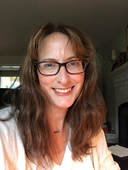 Annie Romano is a literary associate with Olswanger Literary. She represents adult fiction and select nonfiction projects. She is also a published children’s book author and one of the founders of 24 Carrot Writing. You can learn more about her at www.anniecroninromano.com.  Guest Blog by Ellen Mayer All picture books are works of collaboration. But with Leaves to My Knees, I had an extra-special helper: my young granddaughter. Elise was three-and-a-half years old when I first brought her in as a collaborator. A beta reader for this newly published book, she is now a first grader. 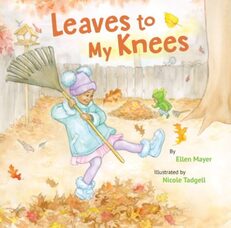 The Math Makes Sense Leaves to My Knees is a playful STEM story about a little girl, Camille, who is determined to rake a pile of leaves all the way up to her knees to jump in. In the story I wanted to demonstrate how young children, before they use formal units of measurement like a ruler, measure by comparing sizes with their own bodies in everyday activities. Elise at age three-and-a-half helped me “test out” the use of the math ideas on measurement and comparing sizes in my polished draft. As we raked leaves together in the backyard, I slipped in story character Camille’s mathematical thinking. How about raking a pile all the way up to your knees? I asked. The prospect not only delighted Elise, but the thinking felt true and natural to her, and soon she was chatting about the progress of the pile up her legs, just like story character Camille. She was also interested in comparing the size of her little toy rake against the big grown-up rake of her grandfather. For this young child, the math in the story made sense. Clarification Is Needed In the fall of 2019, I submitted the manuscript to the publisher. After I signed a contract for the book in the spring of 2020, Elise began to help me with revisions. While zoom readings during the beginning of the pandemic meant the loss of the lap, this technology did afford me a clear view of Elise’s four-year-old face, and I was able to make note of her expressions and body language as I read the text to her. Before the reading, I said: Elise, there are no pictures yet. You’ll just have to imagine them for now. But I’ll read you the words. She listened intently as I read through the entire text. What do you think? I asked. GOOD! she proclaimed. Even without the art, the story kept her attention – and elicited smiles. But I noticed one point where Elise furrowed her brows. When Camille sets out to rake leaves all the way up to her knees, she hoists her rake up onto her shoulder and does so “Because I mean business.” Elise was clearly drawing a blank at the idiom. Is “I mean business” kind of confusing? Should I change that a bit? I asked. Yeah. How about if I say: “Because I am serious––I mean business!” That’s good, she said. Of all the idioms in the story, that one needed a little explication for this four-year-old. Reconsider a Character Months later, a PDF arrived from publisher Star Bright Books with illustrator Nicole Tadgell’s full-color art in it. After reading it aloud to Elise, my beta listener paused thoughtfully and asked: You know, Mimi, Jayden doesn’t say anything. How come? That gave me pause. She found it odd that the goofy and playful two-year-old brother Jayden didn’t say anything. I never deliberately intended for him to be silent. Hmmmm. My publisher was getting the files ready for the printer, but I had to email the editorial team. If it's not too late, I have a suggestion for one more text edit. This suggestion is prompted by a comment made by my granddaughter when I read her the story recently. She pointed out – with some concern – that Jayden doesn't say anything in the story. I suggested that we have Jayden join in with Daddy when he cheers Camille on with a GO! as she readies herself to jump into her leaf pile, now up to her knees. Star Bright Books concurred. One of the editors wrote back: It’s always fascinating to learn what children can see that adults don’t. Thank you, Elise, now Jayden has his own “voice.” 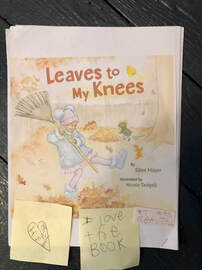 A Starred Review I learned that the reception of the story only improved with repeated readings. I watched my granddaughter sitting on the sofa beside her grandfather as he read aloud from the pages of the PDF, her face passing through a wide range of emotions as Camille suffers ups and downs in her leaf-raking project. When they got to the page where Camille steps into her hard-earned knee-high leaf pile, confirming that it indeed reaches to her knees, and shouts “TA-DA!”, Elise sprang up on the sofa and raised her hands high above her head in victory, just like Camille, and shouted joyfully: TA-DA! Months later, she insisted that she had “requested” that Camille say “TA-DA” back in the editorial stage. But then, that’s what happens in collaboration, isn’t it? We often forget who contributed what. When she was six years old and a rising first grader, Elise wrote out her review. To help her elaborate on her stickies, I said I wanted to “interview” her about each page. With much eagerness and solemnity, she pulled up a chair next to mine. As we slowly examined each page I asked her what she thought and she provided detailed feedback. She loved what the kids were wearing (it’s a Stegosaurus hood on Jayden), Jayden was so funny, her favorite image was the cover because Camille looks so happy. Elise identified with Camille, and she thought her peers would, too. They would understand how Camille feels and they’d feel the same way in that situation. Like, it’s a good book because it’s kind of like you’d be if you were Camille… I think the kids in my kindergarten class would’ve liked the book because it’s like them. 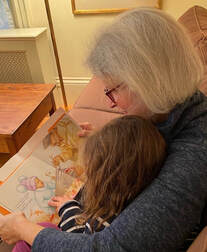 Ready to Read Soon after Elise started first grade, I had a surprise for her. It was the “F&G”, the folded and gathered advance pages of the book, before it was bound. It was a glossy splash of fall color, all ready to read, with real pages to turn. She was the person I most wanted to share it with. I jumped right in and started reading. After several pages, she put her hand over mine. She had a surprise for me, too. STOP, MIMI! she said. Let me read. I’ll read this page. Since I couldn’t see very well through my tears, I let her take over. The book had come far in those last three years. And so had Elise. Lessons Learned From a Young Beta-Reader Quite apart from the joy our journey together afforded me, getting reactions from a real child helped my writing process:
Each child and each book process is unique. For myself in this case, I came away with some thoughts about how to incorporate a young child into the making of a picture book:
You will never sell a book by claiming that your grandchild loves it, but working with a young reader in your family to critically evaluate your manuscript can make it stronger and help it find publishing success. I hope the collaboration I enjoyed with my granddaughter, as I worked on Leaves to my Knees, makes you think about using your own young beta-reader to improve your work. Leaves to My Knees, illustrated by Nicole Tadgell, and published by Star Bright Books in October 2022, is Ellen Mayer’s ninth book for children and her third math-infused one. Before focusing on writing for children, Ellen was an education researcher at Harvard’s Graduate School of Education, studying family engagement in young children’s learning, and an early literacy specialist home visitor with the Cambridge Public Schools in Massachusetts. To learn more about Ellen and her various books for children, visit her website at www.ellenmayerbooks.com. To learn more about illustrator Nicole Tadgell visit her website at http://nicoletadgell.art/. 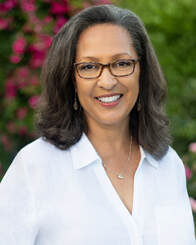 ~Guest blog by Janet Costa Bates I call myself a writer, but I’m not sure why. I should call myself a ‘reviser,’ since, like most writers, I spend much more time revising manuscripts than I do writing the first draft. Writing the first draft is exciting, but the real magic happens during the revision process. My first step in the revision process is to do absolutely nothing. I figuratively put the manuscript into a drawer and then work on something else. When it’s time to look back at it, I can do so with fresh eyes. Are there plot holes and how can they best be fixed? Are the characters true and consistent? If not, does something happen in the story to drive the change in their behavior? Is there fluff to be cut? Cuts can be as small as individual words or as big as characters, sub-plots, or description. I often pick a random number and make myself cut that number of words from a manuscript. There’s safety in knowing I can put any of the words back in, but I rarely do. I also go through the manuscript for grammar - NOT my favorite part. After all, my rule for commas is ‘random.’ Although I try to get the manuscript into decent shape, I’ve learned not to obsess too much. I now know there are magical people called copy editors who have much more grammatical talent than I do. Some revisions are routine and fairly quick. Other revisions are not at all routine, not at all quick, but totally worth it. Let me share a few examples with you. 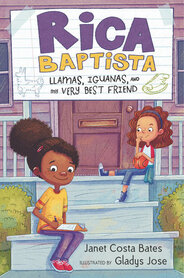 Years ago, I started a manuscript as a picture book, but eventually realized, not only was it too long, it didn't have the visuals a picture book required. After revising, I tried it as a magazine story. It received some interest from a major children’s magazine but, even though I’m pretty good at accepting editorial suggestions, I couldn’t quite wrap my head around some of the changes they were requesting. At a retreat, someone suggested it would be better as a middle grade, so I stretched it into a novel. With that story, I got an agent. My agent spent years - yes, years - trying to sell it. The phrase ‘raving rejections’ started to make sense to me. Editors gushed over the characters, expressed their love for the voice, but ultimately, they all said no to the story. At a Whispering Pines Retreat, I had a critique with Christian Trimmer, then a Simon and Schuster editor. Similar to the others who had rejected the manuscript, he said the story had great characters, great voice, but the plot wasn’t working. He followed that up with ‘but you have a great set-up for a chapter book series.’ My then agent still wanted to try it as a middle grade, but eventually, after a friendly parting of the ways with that agent, I went with Christian’s advice. LLAMAS, IGUANAS, AND MY VERY BEST FRIEND, illustrated by Gladys Jose, is the first in the Rica Baptista chapter book series. It will be released by Candlewick Press on October 25 and is a Junior Library Guild Gold Standard Selection. I’m looking forward to its November 9th launch at An Unlikely Story. 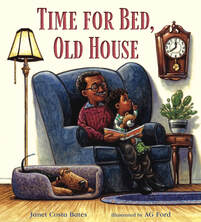 A process that took even longer was a picture book manuscript I started in 1999. I went to my first NESCBWI Conference, met an editor, and submitted the manuscript. She gently turned it down with a helpful note explaining why. That was the first of many rejections it received. I spent a few more years revising it. Again. And again. More rejections. Finally, I put it in a drawer – for about ten years. (I don’t recommend putting a manuscript in a drawer for ten years, but, well, sometimes life happens and you don’t get a chance to open up that drawer for a while.) Eventually, I took that manuscript out, greatly revised it, and sent it to Andrea Tompa of Candlewick, whom I had met with at a conference. She said yes! TIME FOR BED, OLD HOUSE, illustrated by AG Ford, was released in 2021 and has received several honors. It was well worth the wait and the revisions. (Side note: That first editor to whom I sent a very early version of TIME FOR BED, OLD HOUSE, was Mary Lee Donovan of Candlewick. As Andrea’s boss, she gave her the nod to acquire it. Publishing is a small world, my friends.) So, look at your manuscript with fresh eyes. Find the plot holes, strengthen the characters, and cut the fluff. Putting time and effort into your revisions will make the magic happen. 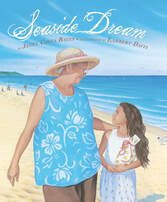 Bio Janet Costa Bates is the author of LLAMAS, IGUANAS, AND MY VERY BEST FRIEND (Candlewick), the first book in the Rica Baptista chapter book series and a Junior Library Guild selection. TIME FOR BED, OLD HOUSE (Candlewick), received four starred reviews, was listed on several 2021 best books lists, and was an NAACP Image Award nominee. SEASIDE DREAM (Lee and Low), received a Lee and Low New Voices Honor Award. Find her at janetcostabates.com or on Twitter/IG @jcostabates.  Guest Blog by Nancy Tandon Nancy Tandon launched two middle grade novels, including her debut, in 2022. 24 Carrot Writing is excited to have Nancy guest blog for us today. She is sharing the details behind the creative events she hosted and how she pulled off two very different book launches. Welcome Nancy! 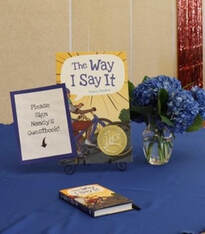 Speaking at an NESCBWI conference years ago, Jarrett Krosoczka imparted this sage advice to the gathered kidlit writers: “You get one book launch.” He was talking about the fact that your first book launch usually ends up looking very much like an episode of “This Is Your Life,” with friends and family turning out in large numbers to support the culmination of your hard work. My takeaway was: enjoy the heck out of it, and don’t expect to get the same reaction with subsequent launches. That day in the audience, I never imagined that I’d be launching two debut middle grade novels in one year! Like many aspiring authors, I’d been dreaming for a long time about hosting my own book event. But when things became real, I felt a bit overwhelmed about the particulars such as location and what the heck I was actually supposed to do and say if people showed up. Spoiler alert: they did! And people are going to show up for you, too. So, here are a few tips to consider when you are headed into your own countdown. My first novel, THE WAY I SAY IT, arrived on the scene in January 2022. Because the threat of Covid spread was still high, I knew I’d have to get creative with both the location and ways for people to access the event. I wanted attendees to feel safe, but I also desperately wanted to celebrate this long-delayed moment. My local indie bookstore (River Bend Bookshop in Glastonbury, CT) is an amazing but very small space. A winter event in an adorable house-sized bookstore was not going to work.
or example, since you may have folks that cannot attend in person, consider asking the bookstore if they can add a virtual component to your launch. That way you'll be sure even Aunt Sally in Idaho can be there for your big moment. For my hybrid launch, River Bend staff were key in setting up a way for guests to join the event virtually. They created an Eventbrite link, handled the registrations, and on the day of the launch ran all the tech for me. All I had to do was remember to turn to the webcam and smile! And even if technology is not a terrifying black hole for you, let the bookstore staff (or some other competent friend) take the lead on any virtual/high-tech components. That way you can concentrate on being fabulous! If for any reason your local bookstore’s space isn’t the best setting for you, don’t be afraid to speak to them about partnering at a different venue. Maybe a park, ballfield or a community center would better fit the mood of your book and be more appealing to your launch audience. Libraries are another great (and low-cost) idea, and you may pick up audience members just by centering your event in a book-loving space. Get creative! But do also think about logistics such as bathrooms, acoustics, and seating. Remember, you are hosting guests. For people showing up in-person at my January launch, I wanted to make leaving their homes on a cold winter day worth it. I had snacks (individually packaged), games, prizes, and a photo booth. Games and prizes were themed to scenes from the book (such as a magnetic dart board because that’s what the main character plays during speech therapy and a “Guess how many M & M’s jar” because those are another character’s favorite candy). I enlisted members of my book club and critique group to run the activity stations for me. Everyone was so helpful! I really could not have done it without them. I recommend you earmark a book launch “maid of honor” who knows how you want things to run. And, of course, thank all your assistants with cards and/or small gifts afterward. In the end, I signed a ton of books, enjoyed friends and family, and truly felt like the book had a proper birthday celebration.
Again, I relied on local bookstore staff to help with book ordering and sales, and this time used the nearby library’s gorgeous event space. I spread the word to the middle grade-minded audience in the area through my family and friend connections. I like to think of a launch from a guest’s point of view, striving to make it more about them and their experience than about selling books. You will want to practice (and time) your presentation, making sure to keep the pace clicking along. I began by thanking my hosts and particular audience members, then read an excerpt from chapter one. After that, we played “Ghost-story Mad Libs” as a group, which was a huge hit. I would encourage you to think of an all-play game you can offer your launch crowd. This gets the audience involved and having fun. Next was another brief reading where I let the audience in on a “family secret” which had made it into the book. Afterwards, many people told me that learning "insider information" was one of their favorite parts. You may want to share or at least hint at some of the hidden gems in your novel as an exclusive treat for the people who came to your event. Finally, I showed examples of the crafts we’d set up at the back of the room and pointed out where I’d be sitting to sign books. This time, family members helped me run my activity stations, which included making ghost bookmarks, building cairn photo holders, and decorating cookies. That evening, I got to have the “post-launch” party I had to forgo with the first book. The most exciting thing was that we were able to host a dinner at the exact inn that the book’s fictional Home Away Inn is based on. Afterwards, we had a bonfire and told ghost stories. It was a magical, fantastical day. Writers, your book will have its own life and celebrations in the weeks and months (and hopefully decades!) to follow the launch. That day is for you to celebrate and share. So, gather the people you love, in a place you love, and do things that will be fun for everyone. I wish you an exciting launch and wonderful memories for years to come!
 by Amanda Smith One of the ladies in my ceramics class, let’s call her Dee, recently made a set of cat dishes for her friend, each dish featuring one letter of the cat’s name, Mozart. One fine day in class, we were all struggling. Like really struggling. Unable to center. Unable to throw. Exasperated, Dee left her wheel for the kiln room to check whether the set of dishes had been fired. She reappeared, holding four dishes that spelled Z-A-R-T. “We’ve lost Mo,” she said. “That’s what’s wrong. Our Mo-jo went missing.” And we were stuck with Zart. Let’s be real. The last couple of years had offered more than enough incentive for Mo to pack his inspirational bags and seek greener pastures. Some of us lost our creative Mo early on in the pandemic, while others had managed to hold on, tooth and nail, for longer. But I haven’t met a single creative over the last two years that hadn’t at some point felt stuck with Zart. Deflated. Incomplete. So what happened in the studio when we discovered the loss of Mo? Each of us dealt with the bad pottery spell differently. Dee is a power-through kind of person. She kept throwing. At the end of the three hours, she had four sloppy piles of clay drying on the plaster table – evidence of four collapsed pots. But she also had two lovely bowls. Peg decided to abandon the wheel for the day and instead focused on glazing some of her vessels that had been bisque-fired– a differently challenging skill, and a good change of pace. I turned my back on the blasted wheel and affixed handles to mugs that I had thrown and trimmed previously. On a whim, I decided to carve designs on the mugs. I got lost in the joy of line and form and measurable progress. The next open studio, Mo was still missing. Dee, Peg and I together decided to hand-build little cheese boards. Collectively we figured out the process, fine-tuned each other’s technique, got expert tips from our studio’s resident master hand-builder and made something pretty cute. Confidence somewhat restored, and bravery bolstered by mutual encouragement, we left the studio rejuvenated that day. So why am I sharing my ceramic woes with you, dear writer? Because, just like me, you might have lost your writing Mo. What to do until Mo returns?
Complete!
Along with the lost bowls, our Mo-jo returned. Did it have anything to do with those cat dishes? Likely not. Did it have everything to do with not giving up even when we felt like it? Absolutely. Keep writing, work on other writing related stuff, fill your well with the frivolous, and commiserate with co-writers. But don’t dare give up. Like a stray cat, Mo will return! (With special thanks to always inspirational DE and PC.)  Guest blog by Elisa Boxer First of all, I’m delighted to be here! 24 Carrot Writing has felt like a friend from the very beginning. It was the first blog I turned to for insight, inspiration and community when I was pre-published, fielding rejections (that one hasn’t changed), and wondering whether my words would ever become books. With two picture books in the wild, three on the way this year, and three more under contract, I’m here to tell you to keep at it, and keep the faith! In this busy year of launches, writing, and revising, I’ve had to be extra diligent about organizing, prioritizing and protecting my writing time. And while I wasn’t completely aware of any concrete process I’d been using to do that, thinking about a topic for this blog post has actually helped clarify a three-pronged method that I have been loosely following, that I will now follow even more specifically, and that I am happy to be able to share! I’ve broken it down into three questions: 1. What wants to be worked on? 2. What time can I carve out for it? 3. What intention do I have for it? What wants to be worked on? I’ve phrased that in the dreaded passive voice for a reason. To me, each project has its own feel; its own energy. Like a living thing. And it’s our job to tap into that energy. Try this: Think of one of your works in progress. Really focus on it. How do you feel about it mentally? Emotionally? Do you feel a sense of possibility? A spark? A readiness to connect with it and move it forward, even in some small way? Or do you feel resistance, like this one might be better put aside for the time being so you can work on something else? Now how do you feel physically? I measure this by a sense of expansion and contraction in my solar plexus. When you think of this project, do you feel lightness and openness (this is the one!), or tightness and constriction (maybe not this one right now). I go through each project and assess each one, paying attention to these feelings. Kind of like I’m opening the door to check on them. This all goes out the window, of course, if I’m meeting a deadline. Then I just have to plow through any resistance. But for example, I’m writing this blog post two weeks before it’s due, because I woke up and felt that niggle of “write meeee!” even though I had planned to work on something else this morning. What time can I carve out for it? This is a helpful re-frame for questions like: What do I have time for? and Where can I slot this in? The truth is, we’re all so busy and have so much going on, the only writing time we get is the time we proactively carve out for it. Writing time, in my experience, doesn’t ever present itself. It has to be actively dug out of a busy schedule. So, each week and each night, I will look ahead and pen in blocks of space for works in progress. Some days it’s only a 15-minute block for a writing sprint in between calls, meetings and appointments. Other days it’s a 2-3-hour block for deep work. But if I don’t commit to carving out time in advance, specifically for writing, other things will move in and take over that space. What intention do I have for it? Once I’ve identified the project that’s calling out for progress, I set an intention for it. Sometimes that intention is a short writing sprint where I set a timer, close all open tabs, turn off all notifications, and write nonstop, as much as I can, in the allotted minutes. Examples of other intentions include: Writing a thousand words, brainstorming titles, doing a revision, coming up with a more detailed secondary character, or putting together a bibliography. Some days my intentions are things like securing photo permissions, organizing my research files, or lining up interviews with sources. The key to setting intentions, for me, is to make sure they’re do-able. Kind of like writing items on a to-do list that you know you can complete. If something is more of a stretch, I consider that a goal, rather than an intention. Goals are great too, but intentions, to me, are more manageable day-to-day. I am sending you so much good energy for whichever project wants to be worked on, the amount of time you can carve out for it, and whatever intentions you decide to set for it! Elisa Boxer is an Emmy and Murrow award winning journalist whose work has been featured in publications including The New York Times, Fast Company and Inc. magazine. She has reported for newspapers, magazines and TV stations, and has a passion for telling stories about people finding the courage to create change. She is the author of The Voice That Won the Vote, A Seat at the Table, and the forthcoming One Turtle's Last Straw. Elisa lives in Maine, and she has several more picture books on the way. Visit her at https://www.elisaboxer.com/ .
Pre-Order Elisa's upcoming 2022 books, ONE TURTLE'S LAST STRAW coming in May, SPLASH! coming in July, and COVERED IN COLOR coming in August, at Print: A Bookstore and get pre-order bonuses like prints and stickers!  ~by Megan Litwin Hello! Thank you to 24 Carrot Writing for hosting me here as I share the cover of my debut picture book, Twinkle, Twinkle, Winter Night! I am absolutely over the moon about the cover art by Nneka Myers. I love the dreamy color palette, and the way Nneka captures the peaceful beauty of the winter world…yet with a hint of festive sparkle in the distance. I can’t wait for the rest of her brilliant work to be seen! And now that the cover is out, I’ve been thinking… It is ironic that a finished book cover is the result of months or years of work, because at the same time, it also represents a new beginning…the beginning of this last stretch until the book is out in the world. And the “Six-Month Stretch” (as I’ve begun calling it) brings new work to light. There is a lot of talk about all the things an author can do to promote a book pre-launch, and to be honest, it can be pretty overwhelming. So I’m taking the advice of veteran writer friends who have shared some wisdom about how to use this time. The underlying theme is “do what feels right to you.” I’m going to couple that with one of my own favorite mantras: “keep it simple.” And in the spirit of 24 Carrot Writing’s goal-setting mission, I have formed a plan. Here are the five main things I’m going to focus on in my “Six Month Stretch”:
Thank you, 24 Carrot readers and writers, for sharing this exciting moment with me! - Megan Shimmer, glimmer, glowing light.
Twinkle, twinkle, winter night. Celebrate winter with this magical twist on a beloved nursery rhyme that brings the shimmering season of lights to life. To learn more about Megan or to subscribe to her newsletter, visit her online at www.meganlitwinbooks.com. To learn more about Nneka Myers and her art, visit her online at www.nnekamyers.com. |
Peruse blogs for advice and tips from KidLit creatives.
Categories
All
Archives
April 2024
Click to set custom HTML
Click on the RSS Feed button above to receive notifications of new posts on this blog.
|

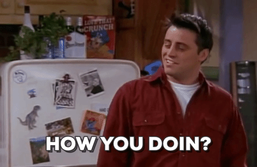
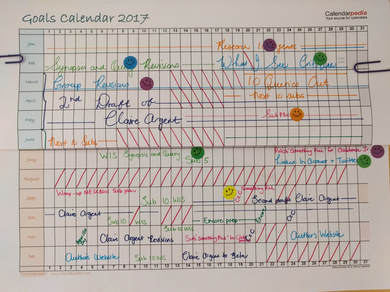
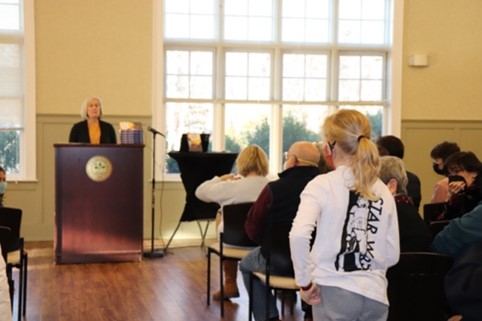


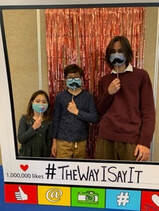
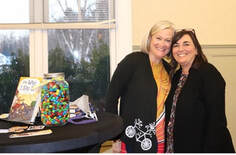
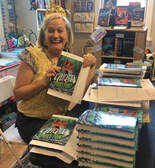
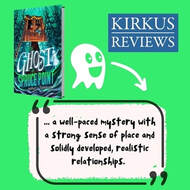

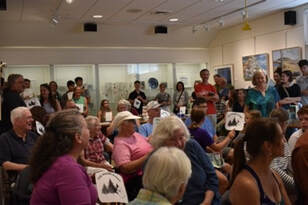
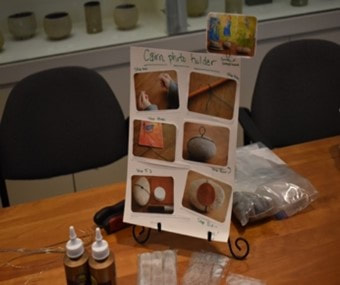
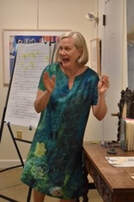
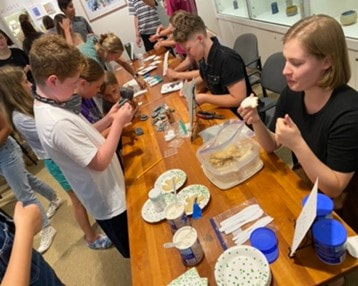



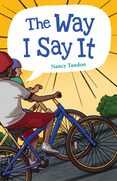
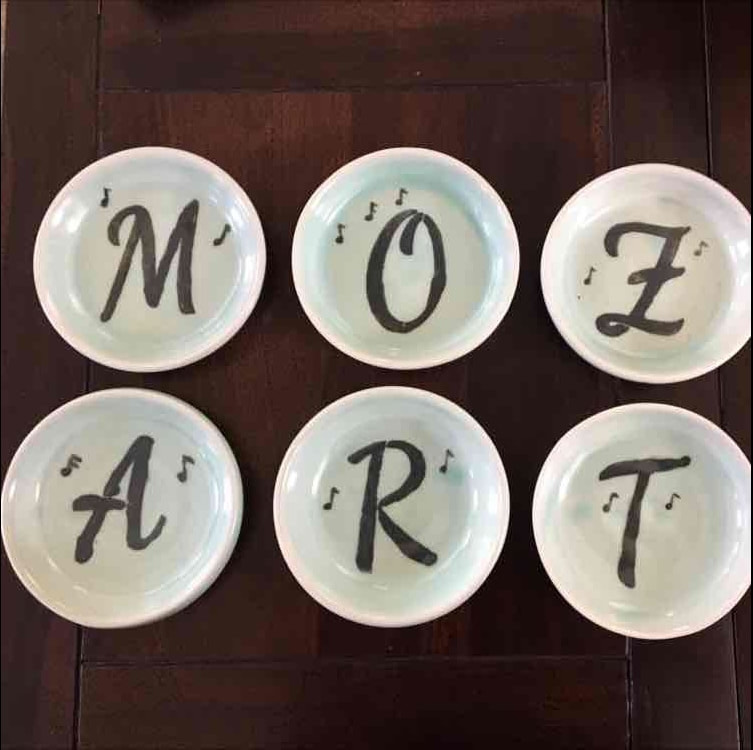
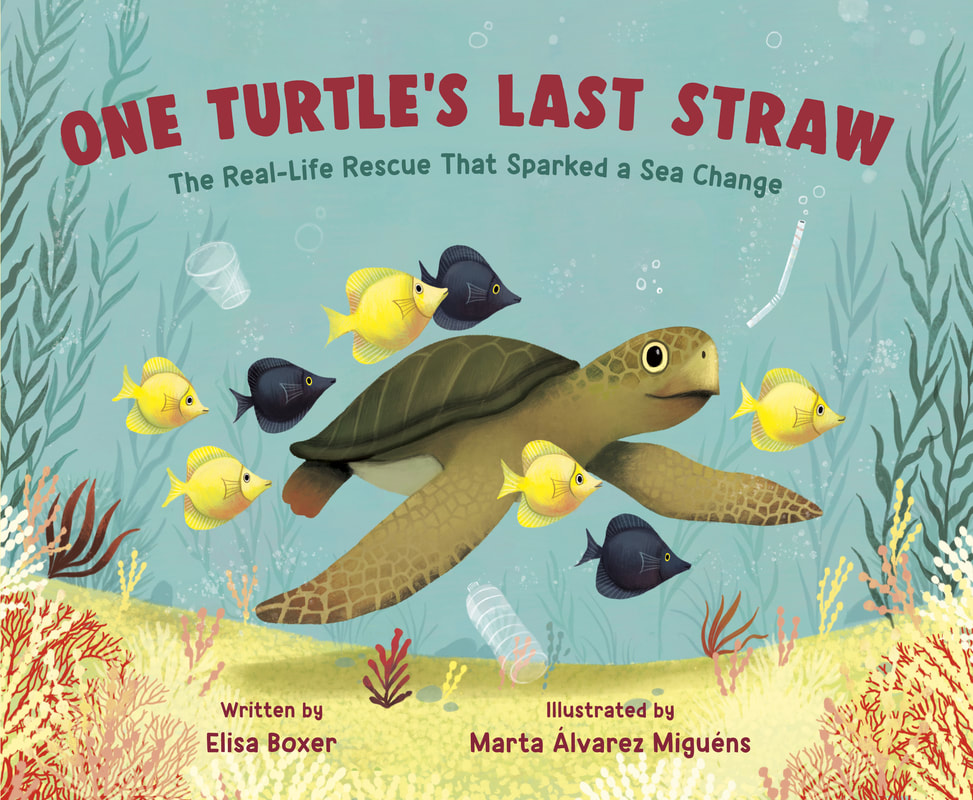
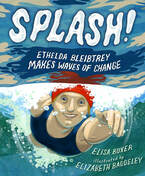
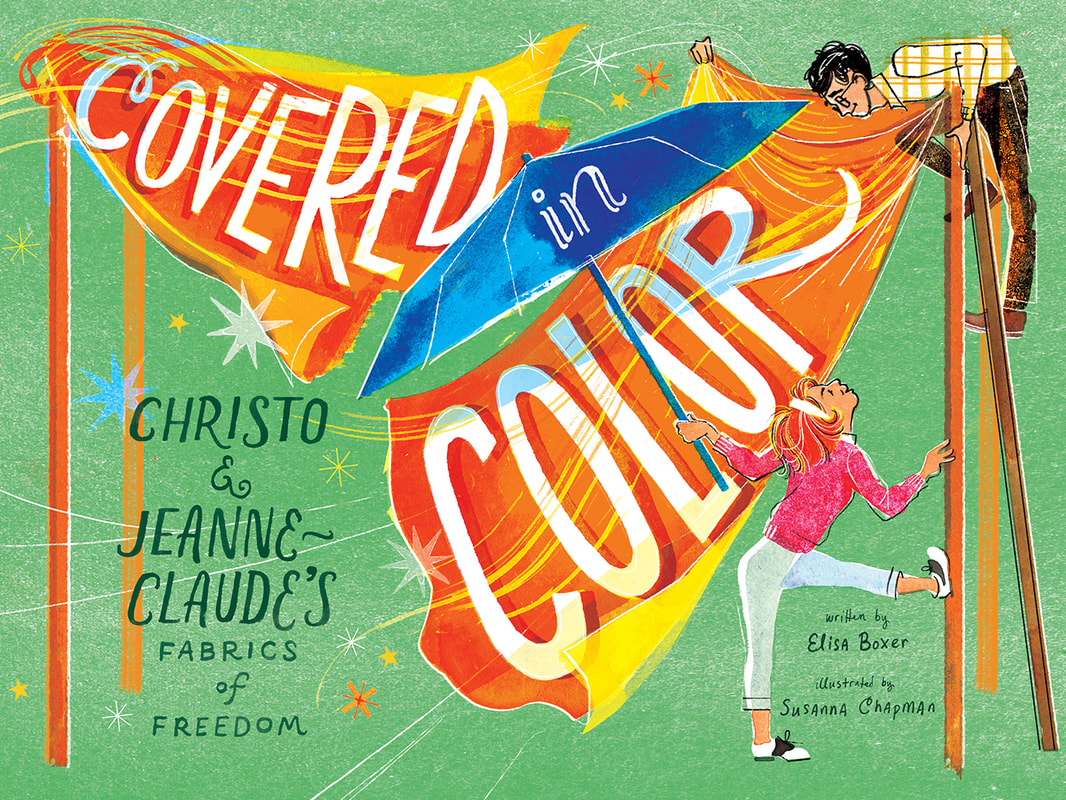
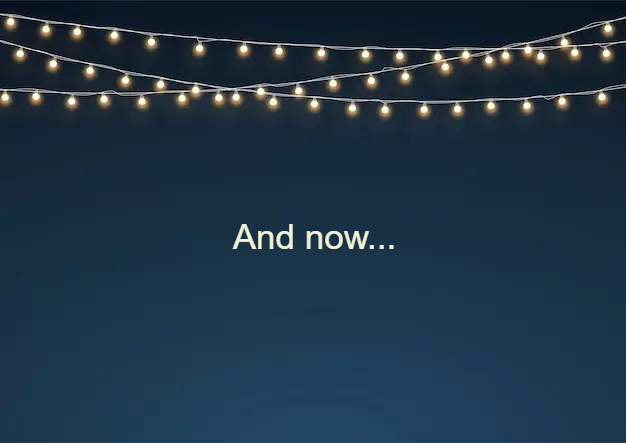
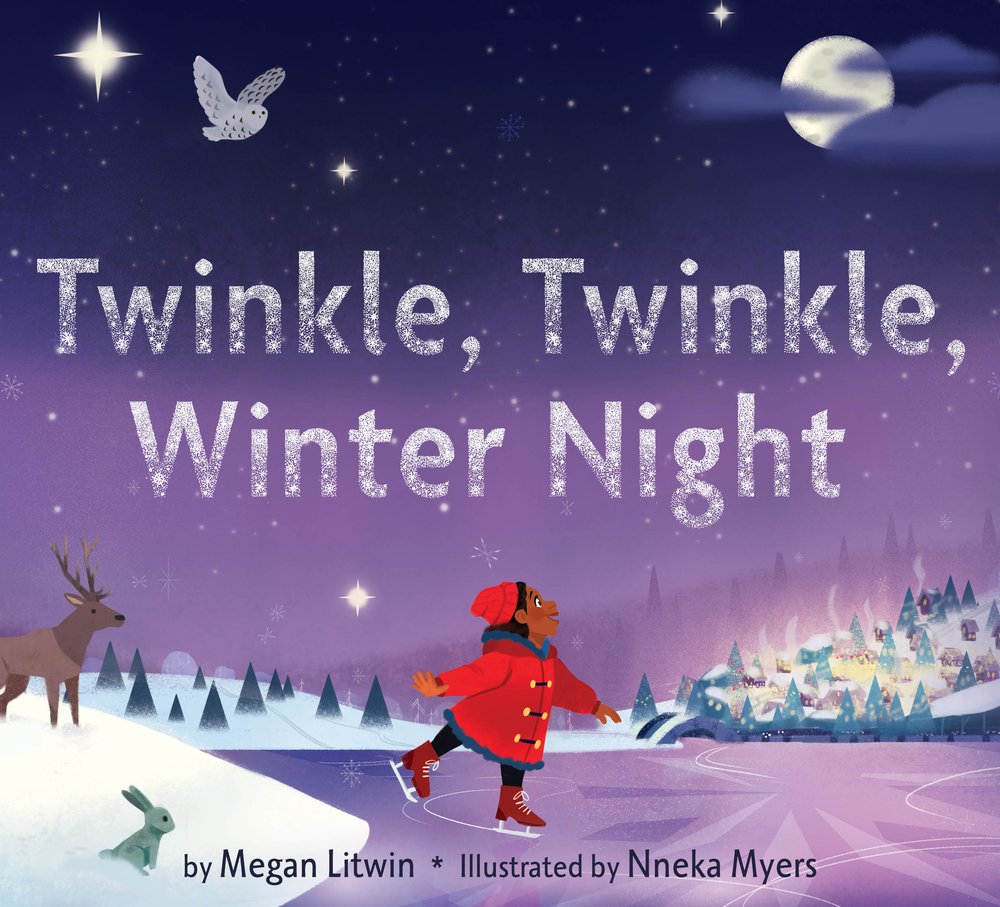
 RSS Feed
RSS Feed